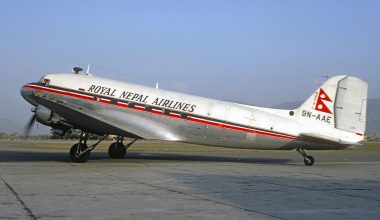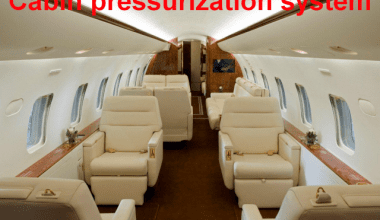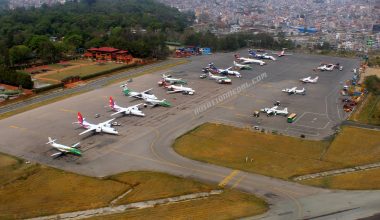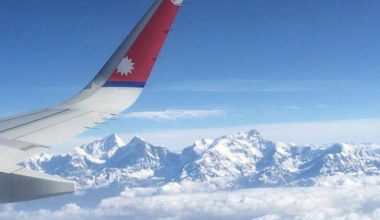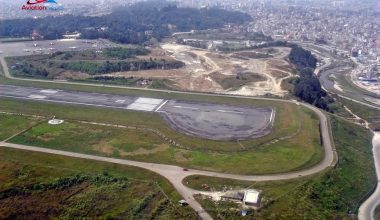One of the major concerns for passengers traveling by air is air turbulence. Sometimes causing more than just a bump creating anxiety to the travelers, air turbulence can be a source of fear and notorious discomforts for the passengers. Many aircraft can withstand greater turbulence than one can feel on regular flights, but it can still create fear in passengers.
Read More: Effects of A380’s wake turbulence

Can turbulence crash a plane?
With modern aircraft and advanced pilot training today, the turbulence caused by lousy weather rarely crashes the aircraft. There is more knowledge of the aircraft crashes, improved designs of aircraft, ATC, and aircraft can easily monitor the storms and winds in the sky before opting for flights. So severe threats are spotted, Turbulence alone won’t crash the modern airplane because they can withstand 1.5 times any forces on airframes and can handle all atmospheric tantrums. From a structural and performance perspective, aircraft are sound. There is advancement in weather systems and standards put around when to fly. They even have wind shear radars. Automated sensors may also develop shortly.
Read More: Vistara flight: severe turbulence caused three passengers injured

Pilots are well trained and balance turbulence penetration speed which can reduce the negative impact of turbulence. Before flights, pilots have a weather briefing. The dispatchers choose the best flight routes which can avoid the turbulent area. They follow ATC’s directions while including changing the direction of aircraft, reducing airspeed, climbing, and descending as per the situation. The pilots inform ATC, which will then notify the other aircraft flying in the same space and frequency. They perform turbulence reporting, related forecasting.
The well-known crash caused by turbulence was in 1966 when BOAC flight 811 was brought down by CAT and crashed near Mount Fuji, resulting in fatalities of 113 passengers and 11 crews. In the last four decades, not a single plane crash had been reported caused by turbulence.
However, even though turbulence isn’t the primary reason for a plane crash, it can still contribute to accidents. The risk of injury due to turbulence is being thrown out of the cabin due to not wearing the seatbelts. Even these accidents are more prone to small aircraft. They don’t have a predictive warning system; radars to detect weather, deicing mechanism, so turbulence still pose a threat to small aircraft.
The changes to jet streams resulting from climate change have a bearing on turbulence. Since 1958, turbulence has been rising from 40% to 90% over North America and Europe.
The passengers don’t need to worry about the plane crash while passing through turbulence. The real thing to worry about is the impact of turbulence inside the cabin. Turbulences are issues of comfort rather than danger.

Turbulence can be associated with thunderstorms or winds.
So what is turbulence?
Turbulence is the chaotic and inconstant swirl of air. It is the sudden fluctuation in air movement causing the plane to chaotic roll, pitch, or yaw. In other words, it is a sudden change of wind velocity. When a plane goes through the area where airflows are irregular, then the passengers can feel turbulence, bumpy twists, and turns. One can get hit by rough air everywhere, from ground to cruising height. Simply, turbulence is characterized by flow velocity and chaotic pressure chances.
As air is a fluid and moves in current, when they are disturbed, turbulence is created. The seriousness of turbulence depends on the size of the current and the object crossing its path. When aircraft passes through violent air with currents about the size of aircraft, it experiences turbulence. Turbulent air in the atmosphere can be the most common cause of turbulence.
Turbulence isn’t entirely predictable
There are winds coming from all directions of the airplane. When the aircraft is flying in the smooth air, it will move smoothly until it gets into disturbed airflow.

The environmental and weather conditions are responsible for turbulence. The causes of turbulence are as follows:
1. Jets streams- Imbalance in wind velocities which can rock the aircraft.
2. Mountains
3. Storms- Thunderstorms can push the current air up and down and cause hazardous turbulence, leading to overstressing or loss of control of aircraft.
4. Turbulent Clouds
5. Heat- Air movement warmed by the sun can cause turbulence.
6. Tall tree forests, skyscrapers
Some myths about turbulence
There are some myths related to airplane turbulence which are as follows:
1. Turbulence can 100% predictable.
Turbulences can’t be predicted to full accuracy, especially Clean Air Turbulence (CAT).
2. Turbulence can break the aircraft down.
The aircraft of today’s generation go through many rigorous tests and subject to advanced requirements on operation, maintenance. So turbulence can’t tear the aircraft apart.
3. We can’t avoid turbulence.
Turbulence is now a regular part of the air journey. The pilots can fly the aircraft in non-turbulent areas or pass through it without causing any accidents.
4. People get injury all the time by turbulence.
Obeying the pilot and flight attendant’s instructions, one can get saved from getting injured by turbulence.
5. Pilots are constantly warned about air turbulence.
There’s no such technology to warn pilots about the approaching turbulence. The warning comes from the nearest ATC who is reported by other aircraft flying ahead at the same cruising level. Clean air turbulence doesn’t have any visual clues to get warned about before.
Turbulence has some features like
1. Irregularity
Turbulence is inconstant and highly irregular. The air gets disturbed from its silent state for a multitude of reasons.
2. Unpredictable
Turbulence is a weather phenomenon that is unpredictable. Vertical currents and eddies cause irregular air movements, which are called turbulence.
3. Varying degree of intensity
The degree of turbulence intensity can be light, moderate, severe, or extreme, depending on the causing factor and air stability.
Light turbulence- The altitude and/or attitude changes slightly. The air passenger may experience slight strain against seatbelts.
Moderate turbulence- The altitude and/or attitude changes intensely; however, the plane maintains its control.
Severe turbulence- The altitude and/or attitude changes abruptly. There’s a vast variation in indicated airspeed. The aircraft may momentarily be thrown out of control. The air passengers can experience forceful tosses against the seatbelt.
Extreme turbulence- In the case of severe turbulence, it is impossible to control the airplane as it is violently rocked by disordered air movement, which can lead to damage to the aircraft structure.
Types of turbulences
There are many types of turbulences the aircraft can go through. There are mainly five types of turbulence.
1. Clear Air Turbulence
It may look clear through the window, but the aircraft starts to shake. It doesn’t last a couple of thousand feet. Also known as CAT, it usually happens above 15000 feet altitude outside of clouds and during winter caused by variation in airflow in the jet stream. Wind shear is the term used for change in the direction or speed of the wind. Temperature inversion (vertical wind shear potential) can cause this turbulence. It is the least predictable turbulence. The planes climb out of rough air.

Characteristics of Clean Air Turbulence
• Occurs above 15000 feet
• Occurs more during winter
• Transitory
• 2000 feet depth
• 20 miles width
• 50 miles length
• 75% of CAT encounters are in cloud-free or clean air
• Patchy CAT areas at a high level
2. Mechanical Turbulence
When the air close to the earth’s surface flows over the buildings, mountains, hills, and other physical obstructions, the horizontal wind flow is disrupted and transformed into unusual air movements. It can manifest as squalls( sudden increase in speed which can remain for minutes).
3. Thermal Turbulence
We can see the air caused by rising warm air creating clouds fly over most of the weather. But clouds can tower up to airplanes cruising altitude. The usual path of the aircraft can be displaced due to thermal turbulence, causing it to undershoot or overshoot the runway. The other route can be used, or flight altitude can be changed per the flight dispatcher’s instructions. Pilots can fly in the early morning or evening when thermal activity is not extreme.
4. Mountain turbulence
The Rocky Mountains can create mountain waves. It happens when air blows over the mountains and falls down the other side making rovers of air carried up into the jet streams, sometimes hundreds of miles from mountains. With rovers, as they come up, there is variation in aircraft performance, which can give rocking movement. It can suddenly be there or not be there. Mountain waves are found downward from mountain ridges.
5. Wake turbulence
The airplane can create turbulence too. The wings of aircraft cause wake turbulence when it’s passing through the air. It is caused by tight circular wingtip vortices formed behind the aircraft. Using the exact flight path on landing and take-offs can affect the plane behind the other plane.

The airplane is the single most common cause of injury to passengers during flights. Such damage can result from falling. How can passengers cope up with turbulence?
Despite turbulence being the scariest part of the flight for passengers, it won’t be that scary if the following things can be done:
- Choosing seats, not at the back of the plane
- Wearing the seatbelts. Even when the seat belt light is off, passengers shouldn’t unbuckle.
- Getting the forecasts of weather and turbulence on routes you are traveling.
The cabin crew should secure loose objects to prevent passengers from being hit during bumps.

